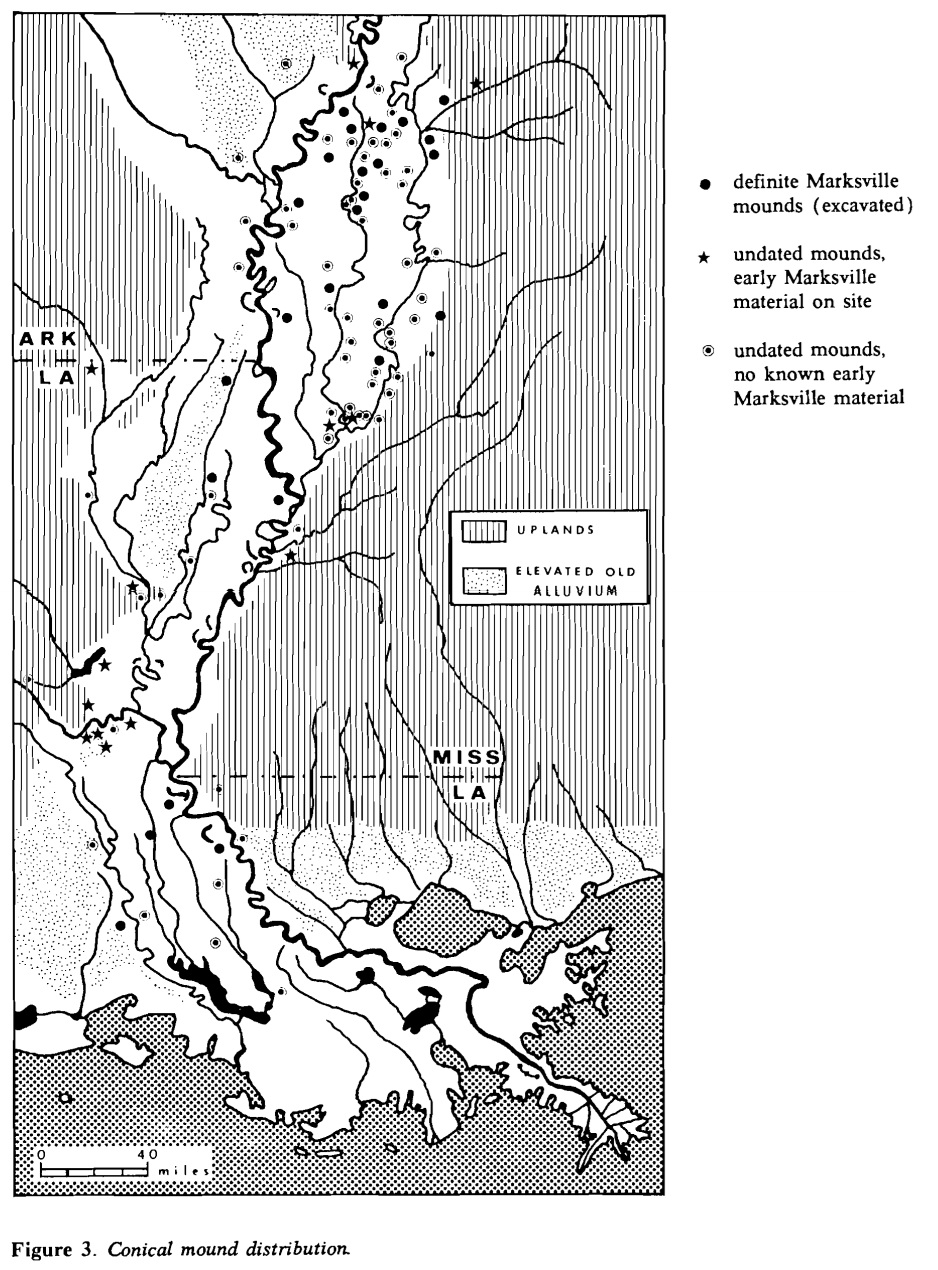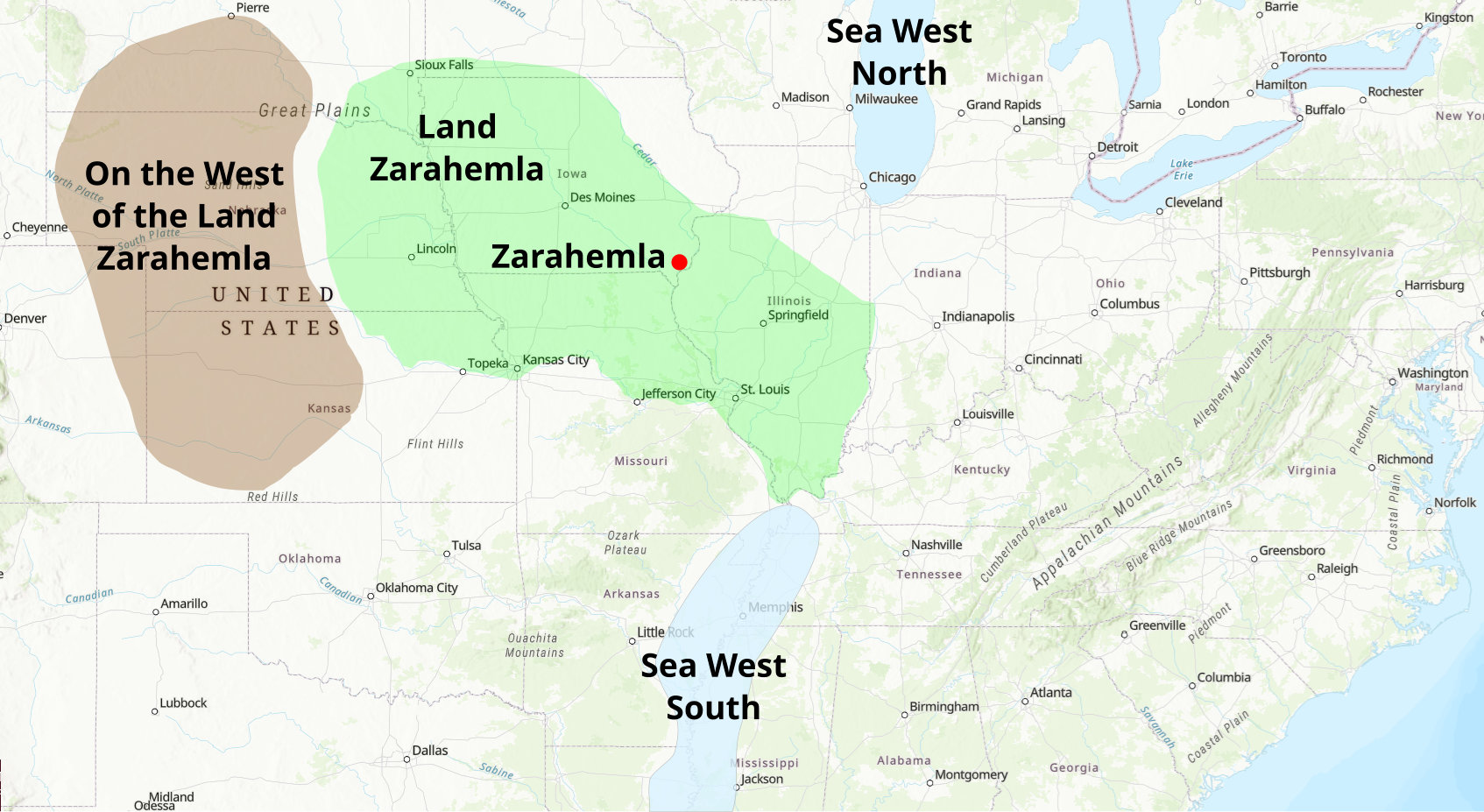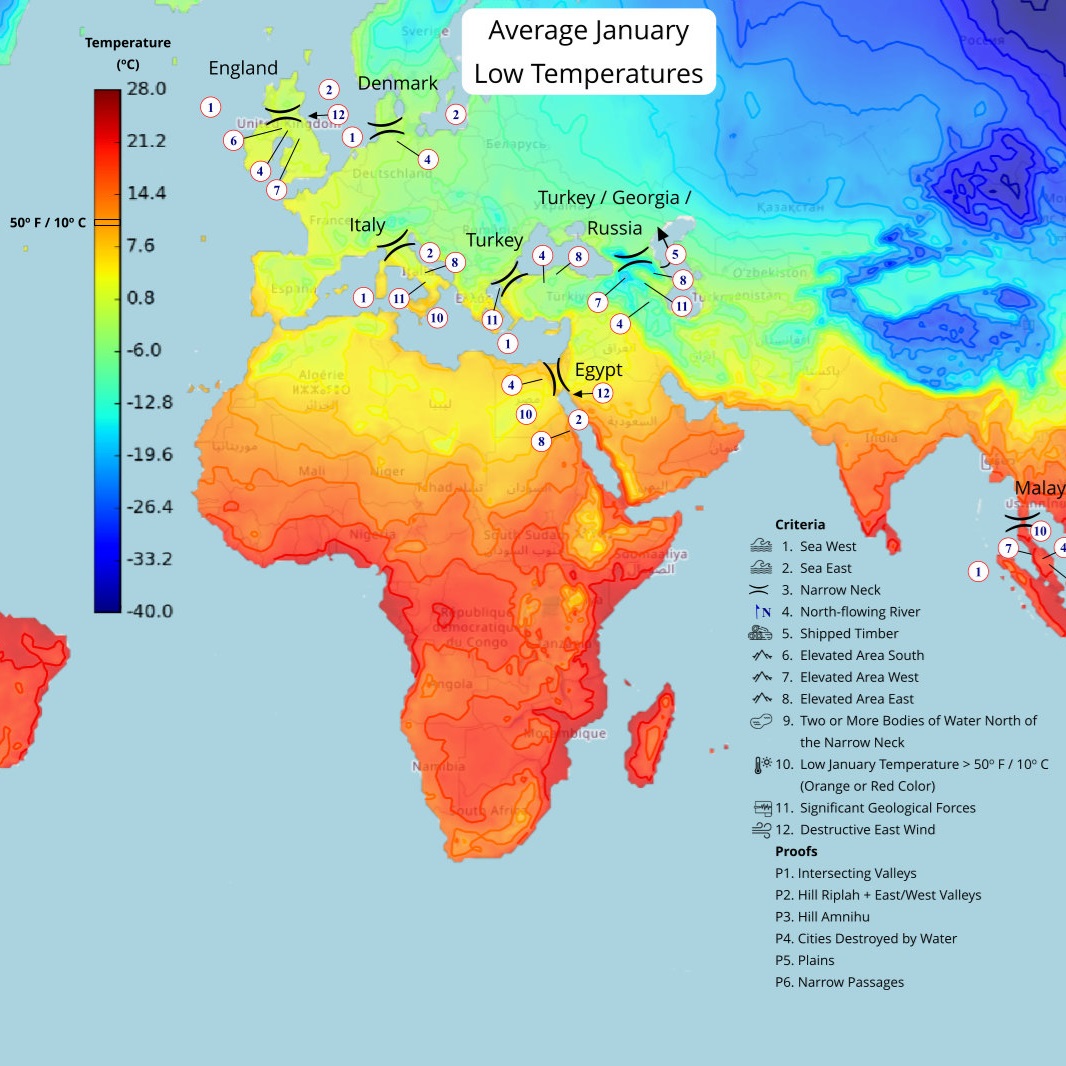For the Nephites...
1 NEPHI 5:16 And it came to pass that we traveled for the space of four days, nearly a south, south-east direction, and we did pitch our tents again; and we did call the name of the place Shazer.
1 Nep 5:55 And it came to pass that we did again take our journey in the wilderness; and we did travel nearly eastward, from that time forth.
I NEPHI 5:181 [18:8]: We did put forth into the sea, and were driven forth before the wind, towards the promised land;
- Commentary: Traveling in a south-southeast direction from Jerusalem and then traveling eastward places the shore where they 'put forth into the sea' on the Indian Ocean from the Arabian Peninsula.
I NEPHI 5:212 [18:23]: And it came to pass that after we had sailed for the space of many days, we did arrive to the promised land;
I NEPHI 5:213 [18:23]: And we went forth upon the land, and did pitch our tents; and we did call it the promised land.
The Jaredites also travelled across the sea to their Promised Land.
ETHER 1:25 And it came to pass that when they had come down into the valley of Nimrod, the Lord came down and talked with the Brother of Jared; and he was in a cloud, and the brother of Jared saw him not.
ETHER 1:26 And it came to pass that the Lord commanded them that they should go forth into the wilderness, yea, into that quarter where there never had man been.
ETHER 1:27 And it came to pass that the Lord did go before them, and did talk with them as he stood in a cloud, and gave directions whither they should travel.
ETHER 1:28 And it came to pass that they did travel in the wilderness, and did build barges, in which they did cross many waters, being directed continually by the hand of the Lord.
ETHER 1:29 And the Lord would not suffer that they should stop beyond the sea in the wilderness, but he would that they should come forth even unto the land of promise, which was choice above all other lands, which the Lord God had preserved for a righteous people;
ETHER 1:36 And now I proceed with my record; for behold it came to pass that the Lord did bring Jared and his brethren forth even to that great sea which divideth the lands.
- Commentary: The Kingdom of Nimrod was located at the head of the Euphrates River. There was an area of Nimrod's influence (place names that include 'Nimrod') north of the kingdom that includes the valley of the Araxes (Araks) River. There is a pass between the headwaters of the Euphrates and Araxes Rivers. The only 'quarter' at the time of the Book of Ether that did not have permanent settlements was the area of Kazakhstan on the other side of the Caspian Sea (the sea in the wilderness). This puts the direction of travel for the Jaredites in an easterly direction. This makes the 'great sea that divides the lands' to be the Pacific Ocean.
ETHER 3:5 [6:4]: And it came to pass that when they had done all these things, they got aboard of their vessels or barges, and set forth into the sea, commending themselves unto the Lord their God.
ETHER 3:13 [6:11]: And thus they were driven forth, three hundred and forty and four days upon the water; and they did land upon the shore of the promised land.
We know the Nephites landed on the sea West shore from the description given in Alma.
ALMA 13:71 [22:28]: Yea, and also on the west of the land of Zarahemla, in the borders, by the sea-shore, and on the west, in the land of Nephi, in the place of their fathers' first inheritance, and thus bordering along by the sea-shore.
These verses also describe that the land of Desolation was a land of the Jaredites.
ALMA 13:74 [22:30]: And it bordered upon the land which they called Desolation; it being so far northward, that it came into the land which had been peopled, and been destroyed, of whose bones we have spoken, which was discovered by the people of Zarahemla; it being the place of their first landing. And they came from there up into the south wilderness.
ALMA 13:76 [22:32]: And now it was only the distance of a day and a half's journey for a Nephite, on the line Bountiful, and the land Desolation, from the east to the west sea;
The sea West (or west sea) was not named until the Nephites had arrived in their promised land, so the reference to 'west' is from the direction of the Promised Land.
Is there a sea West North and a sea West South?
There is a reference to the west sea south in one verse:
ALMA 24:61 [53:8] And now it came to pass that the armies of the Lamanites, on the west sea, south, while in the absence of Moroni, on account of some intrigue amongst the Nephites, which caused dissensions amongst them, had gained some ground over the Nephites, yea, insomuch that they had obtained possession of a number of their cities in that part of the land;
As a note, Old Testament Hebrew doesn't use punctuation, so the commas in this verse were part of the translation into English and cannot be used to interpret the meaning of the phrase 'on the west sea south.' The correct word phrasing in Hebrew is 'west sea on the south' (see the Translation Guide). When the wording is 'on the (east / west / north / south),' it is providing a direction reference relative to the main description (here the main description is 'west sea'). So, this description is referring to the southern part of the west sea. It is not saying that there are two west seas - only one west sea and just the southern portion of it.
Isthmus of Tehuantepec (Mexico) Model Assessment:
The Jaredites traveled east and likely reached the China coast. Their 'vessels or barges' do not have a description of sails, so they would have drifted. Drift models for tracking cargo lost at sea indicate that a high-profile object (some portion above the water) would have help from winds in addition to the speed of the current, and models show a drift from China to Mexico takes about 11.5 months (345 days). Compare that to the 344 days specified in ETHER 3:13 [6:11]. The furthest south possible to drift along the Mexico coast before winds cause the drift to move westerly is in the area of the Isthmus of Tehuantepec.
Lehi and his group (Nephites) set to sea from the Arabian Peninsula. Winds in the Indian Ocean in the late spring and summer are in a northeasterly direction allowing sailing to the east. The Book of Mormon only gives a reference of 'many days' (I Nephi 5:212 [18:23]) for the duration of the sailing. Although sailing around Africa to the Gulf of Mexico is possible, the reference to the Sea West is from the Promised Land (the west coast of the Promised Land). The United States eastern seaboard would not be a 'west' coast. The Gulf coast would be a 'south' coast and not a 'west' coast. Also, the Jaredites drifted from China which means they landed on the west coast of North America. The Nephites landed near where the Jaredites lived (near the west coast) - see ALMA 13:74 [22:30] and ALMA 30:6 [63:5] ... on the borders of the land Bountiful, by the land Desolation [land of the Jaredites], and launched it forth into the west sea, by the narrow neck which led into the land northward.
Sea West (Isthmus of Tehuantepec)

(Tap to Expand)
Heartland Model Assessment:
There are two conflicting interpretations of 'on the west sea south' in Alma_24:61 provided by the Heartland model:
- "With the Iowa Zarahemla as the axis mundi, the American setting has Lehi landing in the Florida panhandle, the Land of Nephi in the mountains of Tennessee, Bountiful in Indiana and Ohio, Zarahemla in Iowa, the Sidon River comprising the river system that includes the Missouri and Ohio Rivers plus the Upper Mississippi, with the West Sea South being the lower Mississippi, the West Sea North being Lake Michigan, the narrow neck being the Niagara Peninsula, and Cumorah in New York, outside of Palmyra-where Joseph Smith found the plates." (reference).
- "Then recently we listened to Cal Christensen, our friend and fellow thinker about BofM geography, how he had researched pre-historic Illinois River boundaries, and came up with a theory that the 'West Sea South' spoken of in the B of M, is a broader version of our present day Illinois River. Since Lake Michigan drains into the Illinois River, it was much wider at the mouth, looking like an extension of the Lake and then flowed down to meet the Mississippi, where it was called the West Sea South, just above where St. Louis is, and not far from Cahokia." (reference)
Heartland Model West Sea South

(Tap to Expand)
Marksville Culture Archeological Sites (Lower Mississippi River)

(Tap to Expand)
Here is a link for the Heartland Model map of a proposed route that the Nephites took from Arabian Peninsula to the Gulf coast of the United States. This link has a larger map of the proposed landing place for Lehi's group at the present day Apalachicola, Florida on the Gulf Coast. As mentioned above, Lehi and his group landed on the coast of the sea West. No explanation is given why the Heartland Model depiction of their landing was not on the 'sea west south' that is on the same map. Also, the Mulekites landed on the sea East shore (see sea East) and the map depicts their landing on the same shoreline as Lehi, so there is faulty logic - both parties did not land on the same shoreline.
Because the sea West was the 'great sea which divideth the lands' and from ALMA 13:71 [22:28] where it describes the nephites landing on the Sea West shore after sailing from the (Old World) Land Bountiful, it has to be an ocean and not a land-locked body of water (like the Great Lakes). Lake Michigan does not allow people to sail from a shore east of Jerusalem to the shores of North America where Lake Michigan is located.
The Book of Mormon only describes a single sea West. The viewpoint of 7th Century B.C. Hebrews was that the sea West (and sea North, and sea East, and sea South) existed at the ends of the world and not as an interior body of water (i.e. a lake) - see Sea North and Sea South - Reality or Metaphor? So, Lake Michigan does not fit the description of a sea at the extremities of the world. And, since there is only one sea west described in the Book of Mormon, the description of Lake Michigan being a sea West and the lower reaches of the Mississippi River being a sea West is not supported by the Book of Mormon.
Comparing the Heartland Model for the sea West (North) and the sea West (South) [reference] in relationship to the land of Zarahemla, we see that the east / west relationship for the sea West (both North and South) does not match the Book of Mormon description where the Book of Mormon states that the sea West is westward ('on the west') of the land of Zarahemla. This means that either:

- The Zarahemla of the Heartland Model is not the Zarahemla of the Book of Mormon, or
- Lake Michigan and the lower reaches of the Mississippi River are not the sea West of the Book of Mormon
ALMA 13:71 [22:28]: Yea, and also on the west of the land of Zarahemla, in the borders, by the sea-shore, and on the west, in the land of Nephi, in the place of their fathers' first inheritance, and thus bordering along by the sea-shore.
Heartland Model Land of Zarahemla and the sea West

(Tap to Expand)
Candidate Sea West locations:
These locations meet the basic requirements for being a sea West. Note: The narrow neck locations all have a navigable body of water to their west - the most likely locations that are navigable from the Arabian Peninsula (by distance) are Malaysia, Korea, Russia, Baja California, Mexico, Nicaragua, and Panama.
Criteria for the sea West:














Criteria for the sea West:
- The Promised Land (the area of a Narrow neck) can be arrived at after traveling eastward from Jerusalem to a seashore and then sailing on ships to the western shore of another seashore.
Baja California

(Tap to Expand)
Denmark

(Tap to Expand)
Egypt

(Tap to Expand)
England

(Tap to Expand)
Florida

(Tap to Expand)
Italy

(Tap to Expand)
Korea

(Tap to Expand)
Malaysia

(Tap to Expand)
Mexico

(Tap to Expand)
Nicaragua

(Tap to Expand)
Panama

(Tap to Expand)
Russia

(Tap to Expand)
Turkey

(Tap to Expand)
Turkey/Georgia/Russia

(Tap to Expand)
×
![]()
